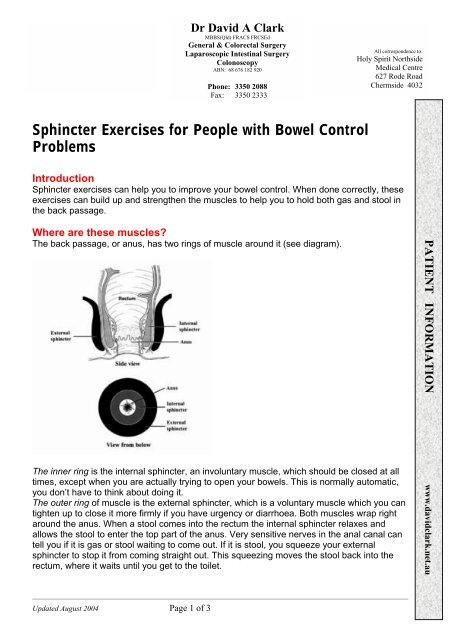
September 7, 2024
Postpartum Recuperation: Solution To The Common Inquiries Asked By Brand-new Moms
Postpartum Materials & Fundamentals For New Mother Consequently, lots of people get little or no advice on recuperation after giving birth. Doing Kegel workouts correctly will help reinforce your pelvic floor muscle mass. To do this exercise, you press the muscles you use to manage the circulation of pee, and hold for approximately 10 seconds, then release. You need to try to do a minimum of 3 sets of ten reps a day. If issues continue, you might want to set up a visit with a pelvic floor professional.Does urinary incontinence vanish?
Initial line therapies for incontinence rely on private conditions, however can include strengthening exercises(Kegels ), bladder training, nerve modulation, pelvic flooring treatment, electric stimulation to improve pelvic floor contraction, or a pessary. Urinary system urinary incontinence typically disappears by itself within a couple of weeks of delivering, although for some women, it may last a bit longer. Kegels can help, yet if it's impacting your quality of life or you're concerned, you may be referred to a urogynecologist for an examination.
Just How To Do Kegel Workouts
The supplier will gently press on the pelvic floor muscle mass with a gloved test finger inside your vagina and ask you to squeeze the muscular tissues. Make certain you're not pressing your stomach, legs, or gluteal muscular tissues at the exact same time, and don't hold your breath. Stress urinary system incontinence (SUI) is a common professional postpartum issue. It is required to discover the threat factors of postpartum SUI in primiparas to offer proof assistance for avoiding and reducing the incident of SUI. Postpartum urinary system incontinence is the spontaneous leaking of pee that new moms may experience.Living With Urinary Incontinence
It is estimated that about one-third of postpartum ladies will experience some kind of urinary system incontinence. It is an often-overlooked problem, with many women thinking it is a typical component of having a child. Furthermore, the muscular tissue and connective tissues that hold the anus in its area under the vagina might be compromised or torn by labor and shipment, which permits the anus to protrude up right into the vaginal canal. The muscular tissues that exist directly listed below the vaginal area and enclose the rectum are the muscles that manage bowel movements. During the last stages of labor, pressing the infant through the vaginal area to distribution, these muscles go through huge pressures and stress. Just as for urinary system incontinence, there is a higher possibility of rectal incontinence for a female adhering to a vaginal delivery than following a cesarean area.- If you had a caesarean section, you can generally hold your baby in the operating room right after birth.
- Words rectal prolapse or rectocele are usually used by physicians to describe these modifications in the shape of the vaginal canal.
- Hormone adjustments (what else is brand-new?) throughout and after maternity can batter your bladder too.
- The further down the child's head enters into the hips, the higher the stress versus these muscle mass and hidden nerves.
- If you're nursing, it might be months before your menstruation period returns, perhaps not until after your infant has been weaned.
- Most of females experience no residual result within simply a few months after childbirth.
Supplier Options For Urinary Incontinence
This cut, called (midline) episiotomy, is meant to avoid subordinate tearing of the vaginal area or anus as the infant supplies. Episiotomy is a recent method, created in order to substitute a directly, clean, easy-to-repair surgical cut for the rugged tear that could or else occur. Reducing this incision is additionally meant to reduce labor by providing the infant's head even more space so delivery might be easier and quicker. This can Bladder retraining be as a result of recovery vaginal tissue, thinning of the genital tissue because of hormone changes, or changes in the genital canal. Talk with your medical professional if you are experiencing any of these signs. " My partner and I had not made love at that point because I was still so frightened of what was going on with my pelvic region," she claims. She was described a "back class", where females obtained together and did a circuit of back exercises, which helped strengthen her core, however achieved little else. Physicians supplying exams, pregnancy assistance and surgical procedure services. The mix of hormonal agents and extended muscle mass implies the muscular tissues that control your bladder are compromised. Treatments can consist of way of living adjustments and reinforcing your pelvic floor muscular tissues via Kegel exercises. Forceps raises the danger of injury to the nerves and muscles of the hips. Forceps are the spoon-shaped steel tools that are often put into the mother's vaginal canal and positioned around the baby's head at the time of distribution. These tools are usually made use of after a lengthy or challenging labor to help deliver an infant. As the medical professional pulls on the forceps, they press away the muscular tissues and soft tissues in the pelvis, enabling even more space for the infant to come out. The forceps likewise help the doctor to draw the infant out, especially if there is a limited fit.Social Links